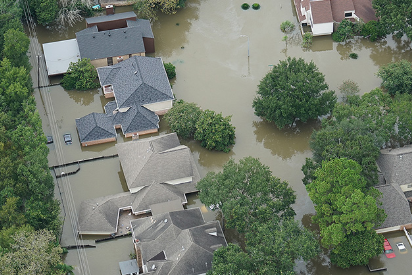From 1980 to 2013, flooding cost Americans more than $260 billion in harm; from 2006 to 2015, government flood protection cases arrived at the midpoint of $1.9 billion every year. What's more, those figures do exclude the toll of storms Harvey, Irma and Maria from 2017.
It's critical to realize the flood level at your home - an official proportion of how high floodwaters could rise where you live. Your nearby building division and your home protection operator ought to have that data, check with construction rental equipment Columbus, Ohio.
 Indeed, even a home on a slope needs flood-sealing. Here are six estimates that will enable you to shield your property from flood harm.
Indeed, even a home on a slope needs flood-sealing. Here are six estimates that will enable you to shield your property from flood harm. Make certain to utilize authorized and safeguarded contractual workers to make any changes. Check with your nearby building division about license prerequisites.
Shield in-home electrical and atmosphere frameworks.
Switches, attachments, circuit breakers and wiring ought to be at any rate a foot over the normal flood level in your general vicinity, as indicated by the Insurance Institute for Business and Home Safety.
Adjust your heater, water radiator and some other moored indoor gear with the goal that it sits over your property's flood level.
Grapple and raise open air hardware
Fuel tanks, cooling units and generators ought to be secured and raised above flood level. Fuel tanks that are not moored can break free, and cut off stockpile lines will taint the ground, the IBHS cautions.
Change your water valves
An overwhelmed sewer framework can make sewage back up into your home. The IBHS suggests introducing an inside or outside reverse valve.
The Federal Alliance for Safe Homes, or FLASH, suggests door valves. They are increasingly mind boggling, and you work them by hand. Be that as it may, they give more grounded seals than fold or check valves, which open naturally to enable water to stream out and after that nearby when water attempts to get in.
Valves ought to be introduced on all channels going into the house, FLASH exhorts.
Decide how water streams around your home
The evaluating or incline of the ground can direct water to your home or away from it. Clearly, it's ideal if the house was constructed with the goal that water empties away out of it.
This can be resolved effectively by observing how water streams or gathers during a normal rainstorm. In the event that your road is inclined to have standing water after a customary rainstorm, converse with your district arranging or ecological administrations office, she prompts. A noteworthy an aspect of their responsibilities is water stream, and they can make proposals.
Take outrageous measures: Opt for a retrofit
In the event that your home floods regularly and moving isn't a choice, you may need to take radical and exorbitant measures.
Alternatives:
Raise your home on wharfs or segments so the most reduced floor is over the flood level. It's costly, be that as it may. Specialists reveal to FLASH that such an endeavor would cost at any rate $20,000.
"Wet-verification" your home by introducing establishment vents that would enable water to move through the structure, rather than ascending inside and causing more harm. You'd need in any event two vents on various dividers. A 1,000-square-foot house would require 7 square feet of flood vents, as indicated by FLASH.
Do some "dry-sealing" by applying coatings and other fixing materials to your dividers to keep out water.
As waters rise, take a minute ago measures
Clear canals, channels and downspouts.
Move furniture, carpets, hardware and different things to upper floors, or if nothing else raise them off the ground floor.
Stop power at the breaker board.
Hoist significant apparatuses onto solid squares on the off chance that they're in threat of being overflowed.













